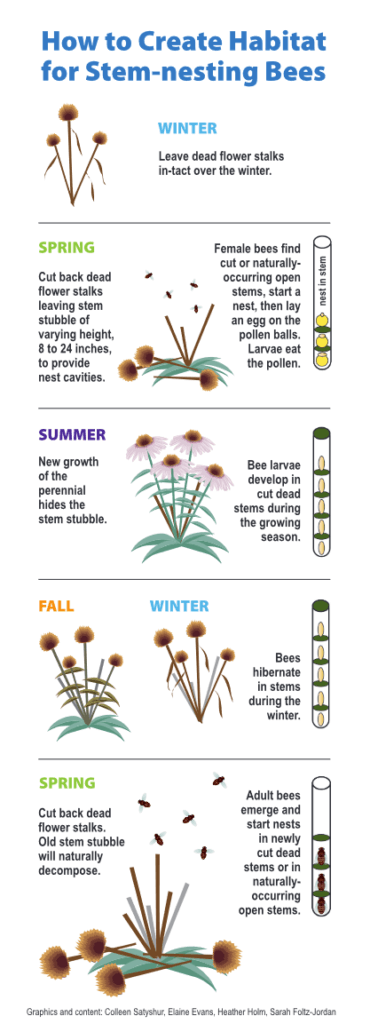
On Home Affordability, Poverty, and Unlawning America
I don’t know who that Michael Green financial analyst guy is who looked at one county in NJ to state
It’s starting to make the rounds again — meme misinformation. Please ignore this advice below as temperature has nothing to do with when to clean up.
1) Various fauna “wake up” at different times throughout the growing season. They all don’t magically emerge at 50 degrees air temp. Take native bee species — lots of them time their life cycles for different parts of the spring and summer, some not even emerging until late summer. It certainly depends on your ecoregion though when fauna emerge. Specialist bees schedule their lives for when specific plant families or genera or species are in bloom.
2) You don’t want to walk in ANY of your beds at ANY time if you can help it — you may be crushing queen bumble bees, adult mourning cloak butterflies, amphibians, beetles, bugs, spiders, etc. Plus you could be compacting wet spring soils.
3) Do you REALLY have to clean up? Why? Maybe for diseased material you do, or for highly-visible spaces where it’s good to “tidy up” to appease neighbors a bit and show you’re caring for the natural space. Cutting back can also help sunlight hit soil for new forb seed germination. But how much could you leave? New growth will hide much of it soon. And don’t forget to leave last year’s stems you cut at 12-18″ tall — those likely have bee larvae or adults in there waiting to emerge whenever they are timed to do so, again, sometime between spring and summer (not just when it’s 50!).
3.5) It’s possible that the original “50 degrees” met soil temperature, which is a cue to think about planting / sowing some species in spring. However, it doesn’t have much to do with when fauna get moving about — although many will be moving about by then. In fact, it’s best to wait to do any garden work until the lawns are greened up fully and tall enough to need their first mowing; and when that is varies a ton by region.
Here’s a handy, illustrated guide to cutting down plants in subsequent springs, what stems to leave, etc. You can find it at Heather Holm’s website.


I don’t know who that Michael Green financial analyst guy is who looked at one county in NJ to state

Oh that’s a cool plant, stiff goldenrod, Oligoneuron rigidum. I wonder if that would work in my garden. Maybe it’s
